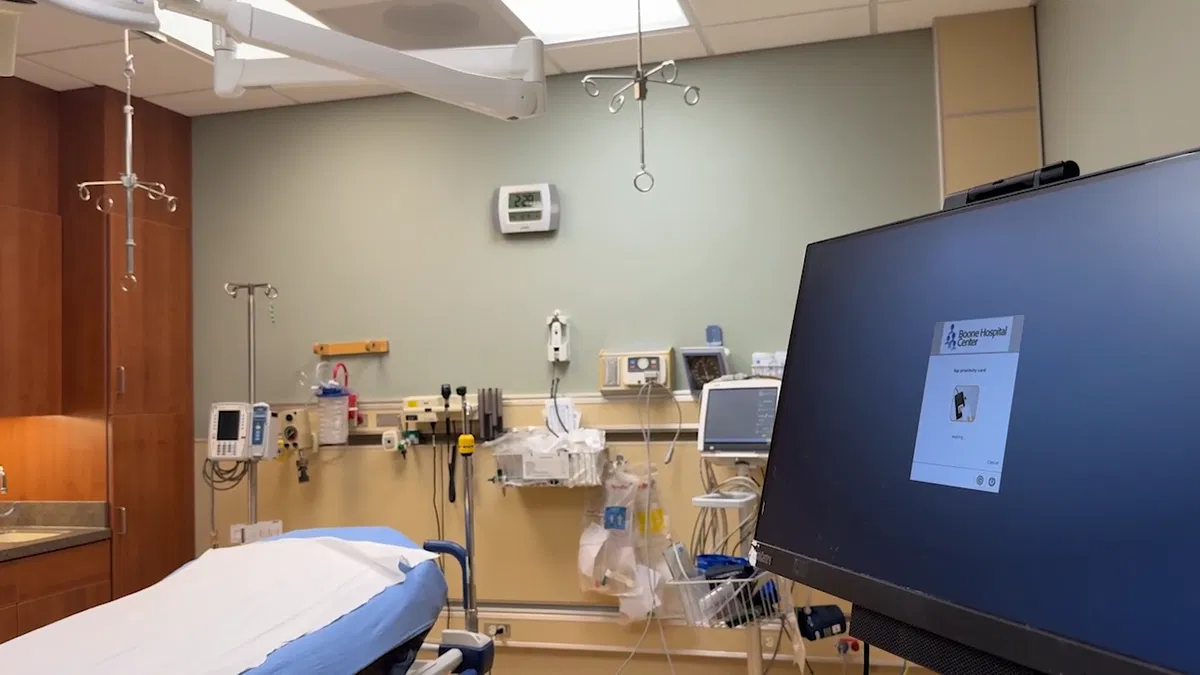Copyright ABC17News.com

COLUMBIA, Mo. (KMIZ) It's not uncommon to walk into an emergency department waiting room full of people, so many that some have to sit on the floor. Patients waiting hours in emergency departments is becoming a more familiar story across the nation. Two hours. Three hours. Five hours. Six hours. Twelve hours. This is how long some people in Mid-Missouri have had to wait in the emergency department before being sent home. It can be nerve-racking. "Whenever you show up to the emergency room, you believe that this is a dire situation," said Boone Hospital Emergency Department clinical educator Jesse Godec. According to the University of Michigan, for safety and quality reasons, national hospital standards say no patient should wait in an emergency department for more than four hours. That doesn't always happen. According to data from the Centers for Medicare and Medicaid Services, average emergency department wait times in Missouri can range anywhere from 2 hours and 5 minutes up to 3 hours and 31 minutes. This is considered high compared to other states, where many departments are also struggling to cut down time. Many factors contribute to the problem. "It's not fair. It's not fair, and how do we fix this? We have to fix this," said Godec. "This is not what we signed up for, to watch sick people sit on the floor." The problem has persisted for at least a decade now, and so have the concerns, according to Godec. Wait times vary by state. For example, the Washington D.C., area is clocking an average of 5 hours and 14 minutes in its emergency departments, while North Dakota's average wait time is 1 hour and 50 minutes. The reasons include limited space, but also things outside of hospitals' control, like primary care provider shortages and closures of rural hospitals. "Over the years, the appropriate use of emergency rooms has become harder and harder for patients because there are less options," said Godec. "Urgent cares often are very busy. Getting into primary care in a timely fashion if something has just arisen that day can be difficult." The provider squeeze From 2014 to 2023, 12 Missouri hospitals in rural communities closed, according to the Department of Health and Senior Services. This leads to patients needing to travel longer, prolonging care. "There's this huge path in the center of the state that has nowhere else to go," said Godec. "Once we cross that threshold of 20 in the department, there are no more places to put people, so that's when the wait starts." Many residents in rural Missouri are forced to travel long distances for emergency care. For example, an Audrain County resident would have to drive about a 45-minutes to get to an emergency department. And if it's life-threatening, like a heart attack, getting emergency care in time is crucial. "We saw overnight, about 15 to 22%, somewhere in that range, an increase in patient volumes, almost all from Audrain," said Godec. A shortage of physicians is also causing a bottleneck effect on emergency departments. Matthew Nusbaum, executive director of critical care and emergency services for Boone Health, said the shortage of primary care doctors ends up causing people to visit the ER for care they should get in a clinic. According to previous reporting from July, Missouri is short almost 500 primary care physicians. Experts project that by 2026, Missouri will have a shortage of 2,000 primary care providers. Not having access to a primary care provider can lead people to prolong their health needs, whether it be not going to an annual check-up or keeping up with treatment for a chronic illness. "What you'll see is a lot of folks don't have PCP or primary doctors, and so a lot of times the emergency department is their primary care," said Nusbaum. This is especially true for people using Medicaid, who are underinsured or do not have insurance. According to research from the National Library of Medicine, Medicaid expansion increased emergency department wait times by about 10%. Hospitals, by law, cannot turn away a patient because of their financial or insurance status. Urgent care clinics can also be costly for those without insurance. According to GoodRx, a typical visit can cost between $125 and $300, with an average of $180. Urgent Care clinics are also limited in what testing and care they can provide compared to an emergency department. "Urgent cares are often very busy. Getting into primary care in a timely fashion can be difficult," said Godec. "About half our patients don't really need the emergency room, but they're still here and they're still in distress, and if we don't deal with the problem now, in a week from now, it could get worse." Another prevalent factor playing into emergency department wait times is staff burnout. A study done in South Africa in 2023 found that 50% of emergency department doctors and nurses are experiencing burnout. Emergency department wait times could get even longer with the newly passed Big Beautiful Bill, as almost 12 million people across the nation face the loss of health care coverage. The bill reduced subsidies for insurance providers and imposed stricter rules for eligibility, pushing more sicker people to the emergency department. Lacking insurance causes patients to delay their health care and hospitals to figure out how to foot the bill when the revenue stream is lower. Check back and watch ABC 17 News at 10 to see what local hospitals are doing to cut down on wait times.



